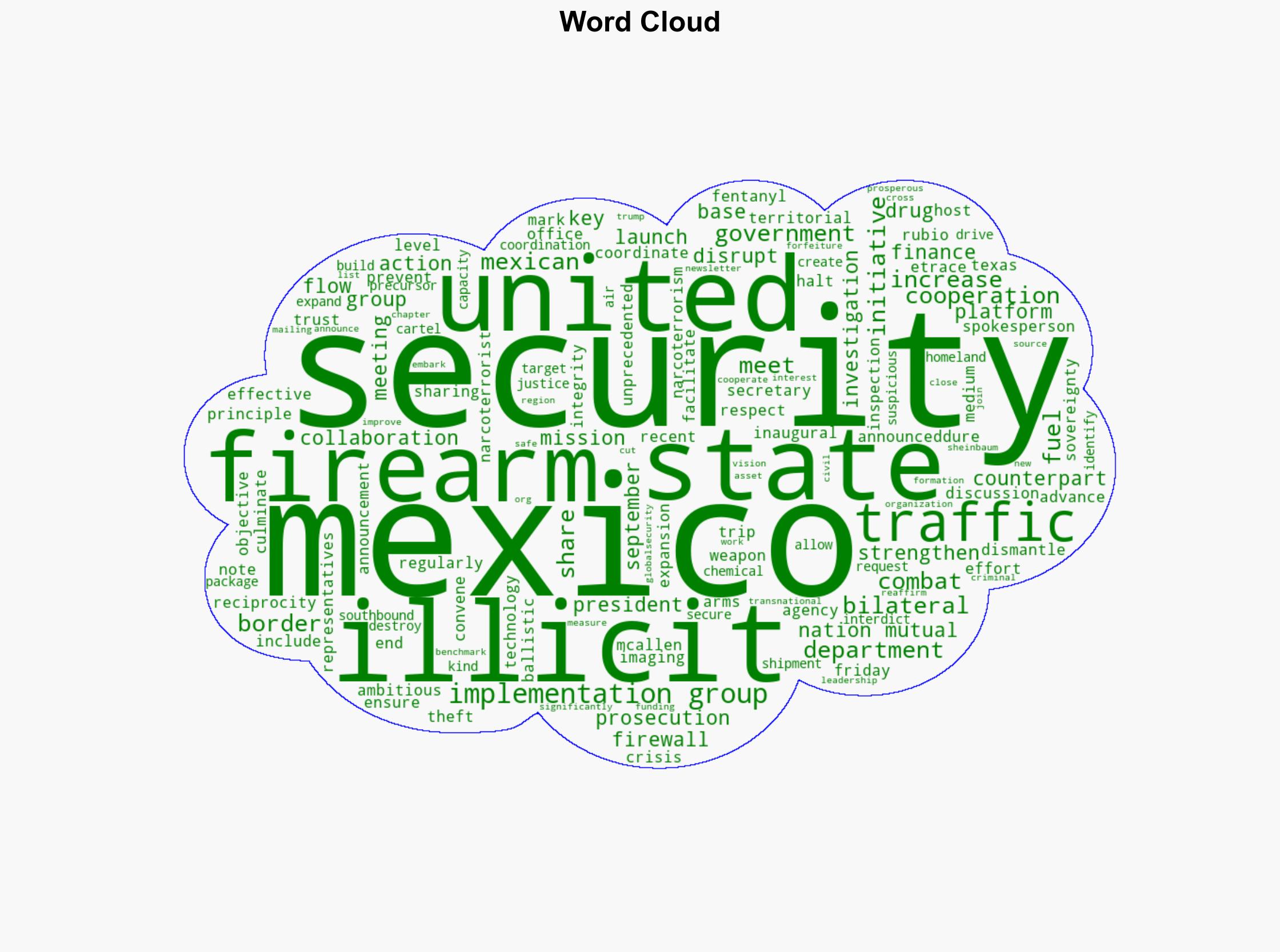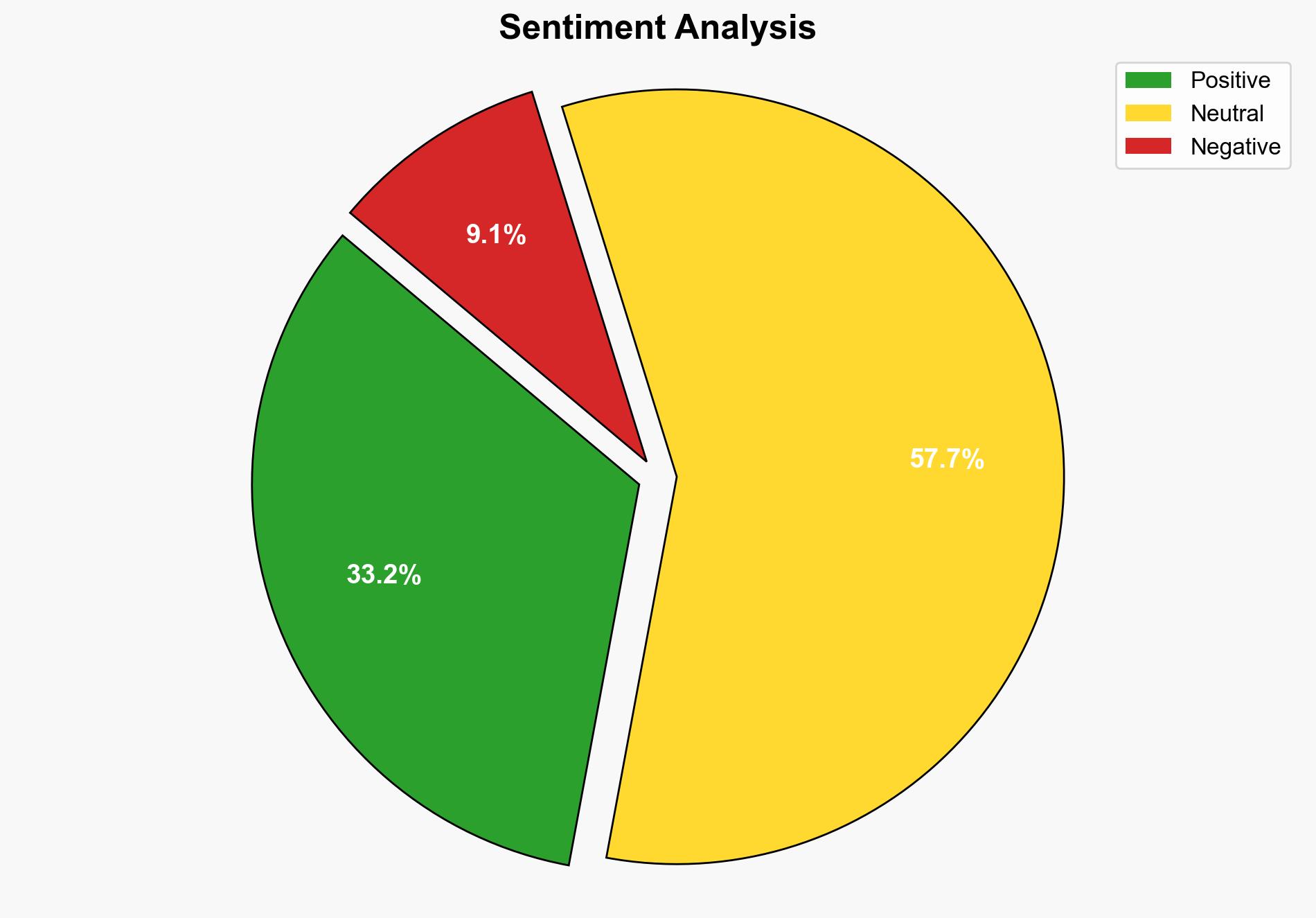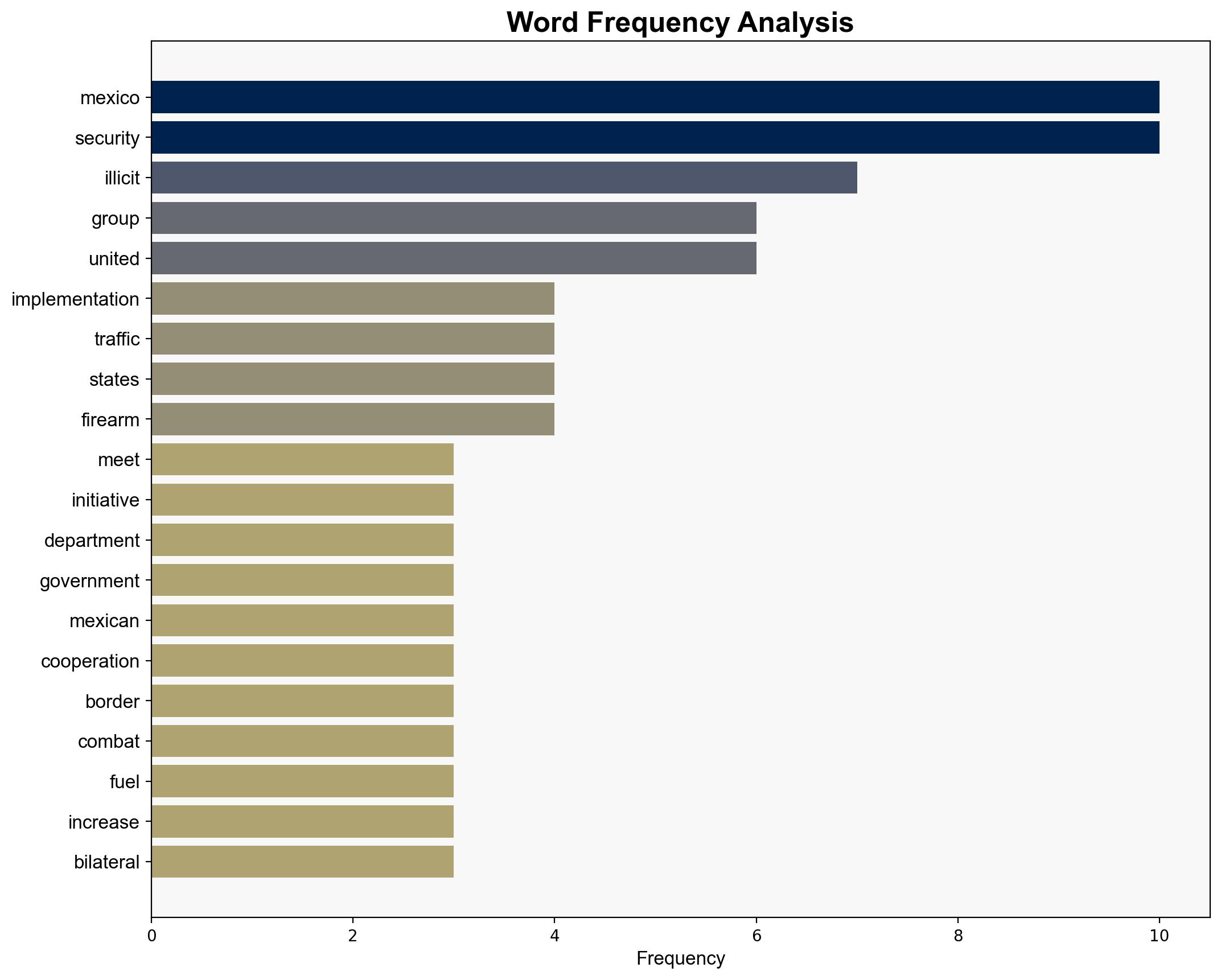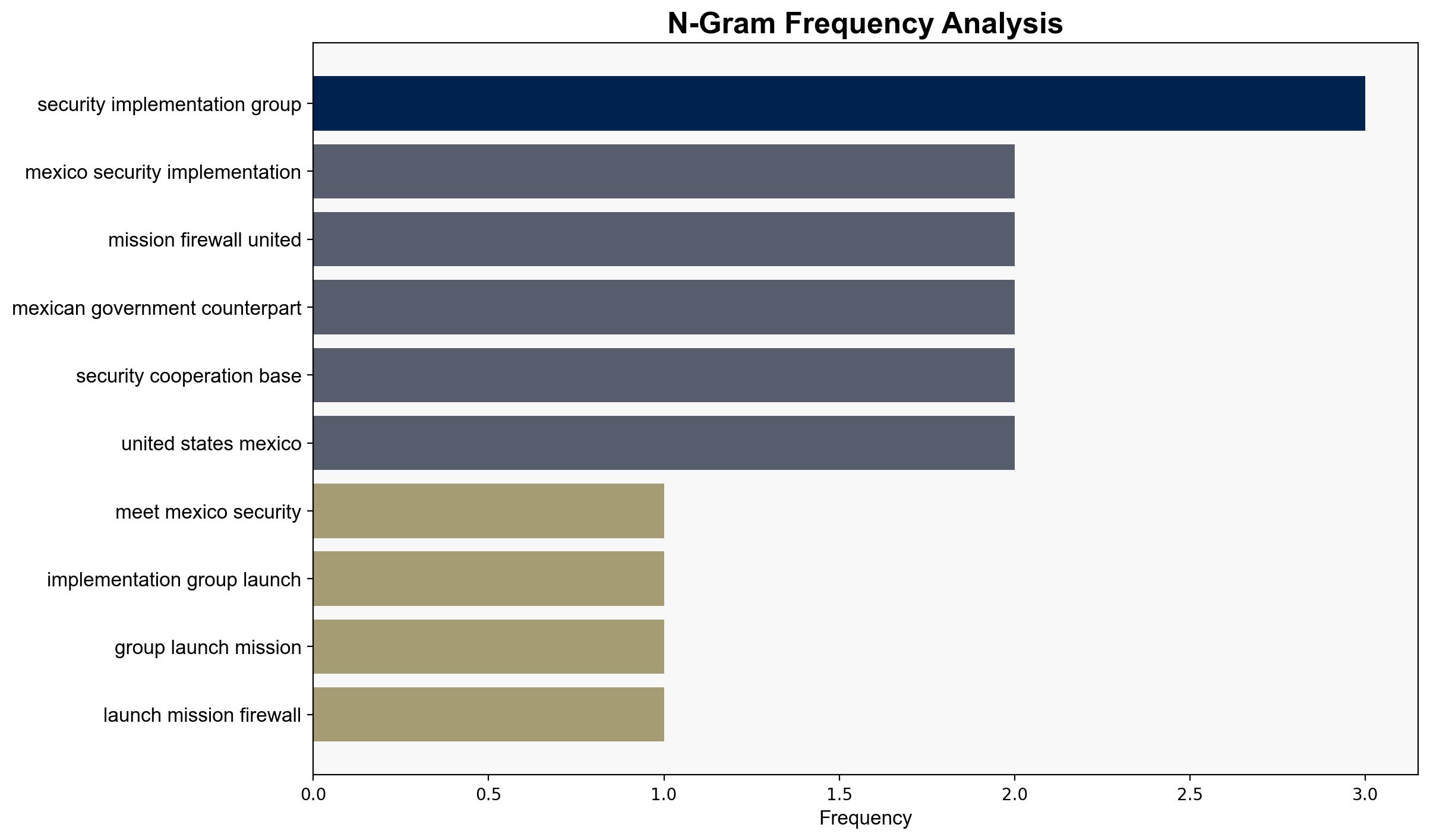First Meeting of the US-Mexico Security Implementation Group Launches Mission Firewall United Against Arms Trafficking Initiative – Globalsecurity.org
Published on: 2025-09-29
Intelligence Report: First Meeting of the US-Mexico Security Implementation Group Launches Mission Firewall United Against Arms Trafficking Initiative – Globalsecurity.org
1. BLUF (Bottom Line Up Front)
The most supported hypothesis is that the US-Mexico Security Implementation Group aims to significantly disrupt arms trafficking and related criminal activities through enhanced bilateral cooperation. Confidence in this assessment is moderate, given the complexity of the issues and potential for unforeseen challenges. Recommended action includes strengthening intelligence-sharing mechanisms and monitoring the initiative’s progress to ensure alignment with strategic objectives.
2. Competing Hypotheses
1. **Hypothesis A**: The initiative will effectively disrupt arms trafficking and related criminal activities through enhanced US-Mexico cooperation, leading to improved regional security.
2. **Hypothesis B**: The initiative may face significant implementation challenges, such as bureaucratic inertia and lack of trust, limiting its impact on arms trafficking and regional security.
Using ACH 2.0, Hypothesis A is better supported due to the structured approach and high-level political commitment. However, Hypothesis B remains plausible due to historical challenges in bilateral cooperation.
3. Key Assumptions and Red Flags
– **Assumptions**: The initiative assumes both countries will maintain political will and resource allocation. It also presumes effective communication and trust between agencies.
– **Red Flags**: Potential bureaucratic resistance, differing national priorities, and lack of measurable benchmarks could undermine the initiative.
– **Blind Spots**: The impact of external actors, such as cartels adapting to new enforcement measures, is not fully addressed.
4. Implications and Strategic Risks
– **Patterns**: Increased bilateral cooperation could set a precedent for future regional security initiatives.
– **Cascading Threats**: Failure to effectively implement the initiative could embolden criminal organizations, increasing regional instability.
– **Escalation Scenarios**: If the initiative is perceived as infringing on sovereignty, it could lead to diplomatic tensions.
– **Dimensions**: Economic impacts include potential disruptions to illicit trade networks; geopolitical impacts involve shifts in regional power dynamics.
5. Recommendations and Outlook
- Enhance intelligence-sharing platforms to ensure timely and accurate information exchange.
- Develop clear metrics to evaluate the initiative’s effectiveness and adjust strategies accordingly.
- Scenario Projections:
- **Best Case**: Successful disruption of arms trafficking, leading to improved regional security and cooperation.
- **Worst Case**: Initiative fails, exacerbating arms trafficking and straining US-Mexico relations.
- **Most Likely**: Partial success with incremental improvements in cooperation and security.
6. Key Individuals and Entities
– Secretary Rubio
– President Trump
– President Sheinbaum
7. Thematic Tags
national security threats, cybersecurity, counter-terrorism, regional focus





